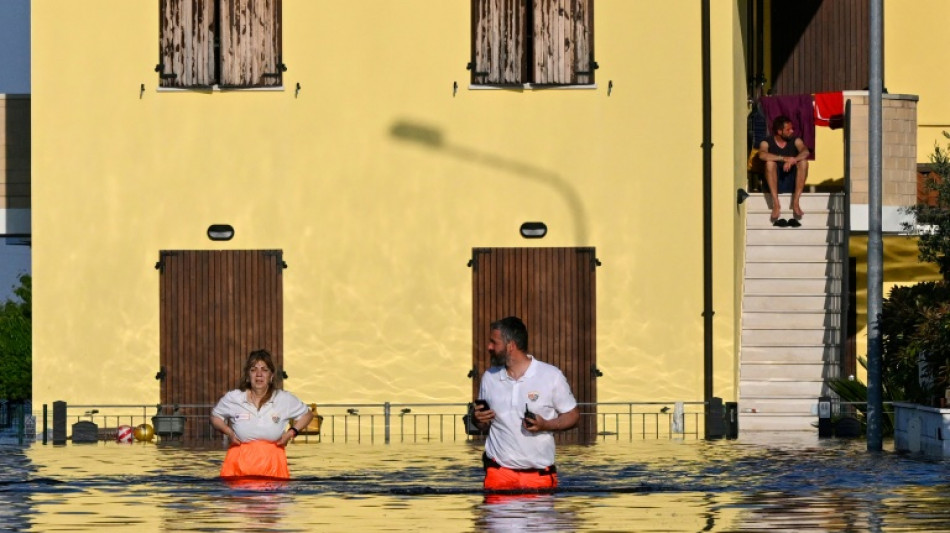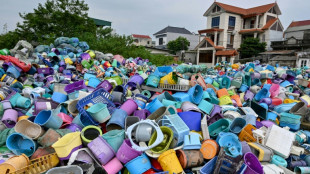
| RBGPF | 100% | 60.1 | $ | |
| CMSC | -0.65% | 24.57 | $ | |
| SCS | -1.33% | 13.54 | $ | |
| NGG | -0.68% | 62.83 | $ | |
| AZN | -0.06% | 66.36 | $ | |
| RIO | -1.53% | 62.03 | $ | |
| GSK | -0.38% | 34.02 | $ | |
| BTI | 1.01% | 37.71 | $ | |
| RELX | 0.51% | 46.81 | $ | |
| BCC | -2.76% | 148.41 | $ | |
| BCE | -1.46% | 26.63 | $ | |
| RYCEF | -0.29% | 6.78 | $ | |
| VOD | -0.56% | 8.86 | $ | |
| CMSD | -0.61% | 24.43 | $ | |
| JRI | -0.98% | 13.24 | $ | |
| BP | -1.24% | 28.96 | $ |

Italy floods caused by 'one-in-200-year' event: experts
Deadly floods that left large swathes of northeast Italy under water this month were caused by a "one-in-200-year" weather event, with climate change playing a limited role, experts said Wednesday.
Seventeen people died and tens of thousands were forced to leave their homes after three heavy downpours hit the Emilia Romagna region within three weeks, causing landslides and floods that destroyed farmland, towns and businesses.
The report from the World Weather Attribution (WWA) group of climate scientists said May had seen "the wettest event of this type" for two centuries, calling it a "one-in-200 year event".
The group -- whose goal is to demonstrate reliable links between global heating and certain weather phenomena -- said its models suggest such events, in this region at this time of year, are not becoming more frequent or intense.
"It is relatively unusual for an attribution study to find that extreme rainfall was not made more likely by greenhouse gas emissions," the WWA said in a press statement.
Warmer atmospheres can hold more moisture and therefore often result in more frequent and intense rainfall.
But the group said this was offset by a decrease in the number of low-pressure systems in the central Mediterranean, linked to climate change, which mean less heavy rain.
It underlined that other climate change-related events are increasing across Italy, with an overall trend towards drought but also changes in seasons leading to potentially less frequent but more intense downpours.
The impact of the Emilia Romagna floods was exacerbated by a two-year drought in northern Italy which left the land dry and hard and unable to absorb the water.
Decades of urbanisation had also increased the flood risk, the study said.
"Our statistical findings acknowledge the uniqueness of such an event which was driven by an unprecedented sequence of three low-pressure systems in the central Mediterranean," said Davide Faranda, one of the report's authors and a climatologist at France's Institute Pierre Simon Laplace.
He emphasised that it was not that climate change had no role, but the relationship went beyond the organisation's statistical analyses.
"Although spring heavy rainfall episodes are not increasing in Emilia-Romagna, extreme rainfall is increasing in other parts of Italy," he said.
Almost 94 percent of Italian municipalities are at risk of landslides, floods and coastal erosion, according the Italian Institute for Environmental Protection and Research (ISPRA).
Emilia Romagna is particularly at risk, with a history of flooding and landslides, although nothing even comparable to this month's disaster has occurred since 1939, said the study, conducted by 13 researchers from Europe and the US.
A.Bruno--IM



